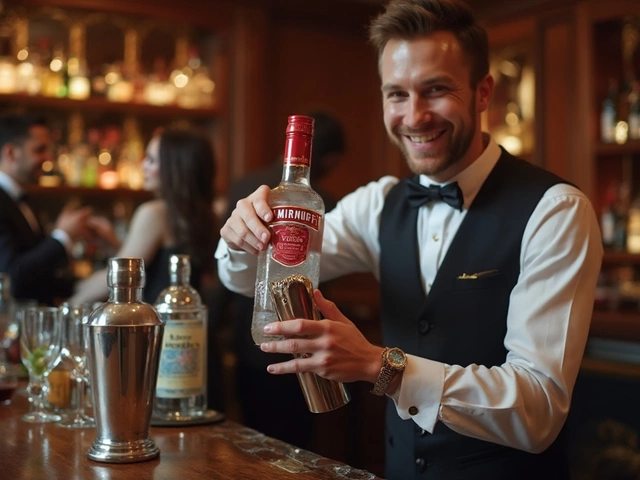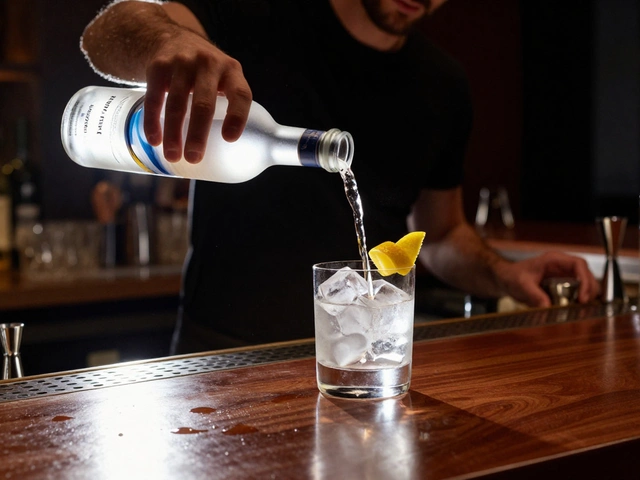When we imagine the rugged life of a cowboy, a few things come to mind: dusty trails, cattle drives, and, of course, that much-needed swig of beer at the end of a long day. But what kind of beer did these cow-punchers actually drink in the Wild West?
In the mid to late 1800s, the beer landscape of America was starting to take shape, influenced heavily by European immigrants. Specifically, German brewers brought their expertise and passion to the budding cities and frontier towns, crafting beer that would eventually become a cowboy's go-to refreshment.
This article takes you through the history, unearthing how these brews ended up in the hands of cowboys, and how this story is celebrated even today in beer festivals that honor this bold and adventurous era. Let's saddle up and dive into the frothy tales of cowboy beer.
- Historical Background: Beer in the Wild West
- German Influence on Cowboy Brews
- Brewing on the American Frontier
- Cowboy Beer in Modern Festivals
Historical Background: Beer in the Wild West
The Wild West was a time of transformation, a place where dreams were built from dust and grit. In this rugged landscape, the art of beer brewing found its surprising foothold. Cowboys, often depicted as solitary wanderers enjoying a glass of whiskey, also savored the refreshment of a good beer. But what kind of beer was it? During the mid-1800s, beer was becoming a staple due to the influence of European, especially German, immigrants. German immigrants brought lager beer technology and crafted beers that suited both the settlers and the arduous conditions of frontier life. Craftsmanship was key, with brewing techniques and preferences that would mirror what we might enjoy in a traditional tavern today. The rise of breweries accompanied the expansion of towns, offering a slice of comfort amidst a world of uncertainty. As towns sprouted near railways and cattle paths, so did the opportunity to set up saloons—each offering a much-needed retreat for weary travelers and locals alike.
These saloons were more than just watering holes. They were social hubs where deals were struck, news was shared, and connections were made. The popularity of beer grew, and brewers began to experiment with new blends, flavors, and ingredients, making the journey from the East Coast to the frontier. With limited refrigeration, brewers had to define innovative methods to ensure their products remained fresh, which led to the enthusiastic adoption of ales alongside lagers. Cowboys, ever resourceful, would adapt local resources in their brews, often using whatever grains and herbs were available. This led to distinctive flavors that can still inspire modern brewers even now. Beer in the Wild West was an emblem of the resourcefulness of settlers, offering not just a drink but also a reminder of home, far away.
According to a letter from a tavern keeper in Dodge City, saloons would often store barrels directly in cool riverbeds to preserve the beer's quality—a testament to adaptability.
"We shall find ways to keep our customers' spirits as high as the mighty Rockies," he noted, indicative of the spirit that drove early brewers to innovate and survive in these harsh conditions.However, the journey from brew kettle to cowboy lips was fraught with challenges. The transportation of beer over dusty, uneven trails risked spoiling delicate flavors, yet it helped build a culture around resilient, flavorful beer perfected by Western saloon-keepers. Despite the challenges, these enterprising brewers ensured their beverages became a treasured conclusion to many a cowboy's dusty day.
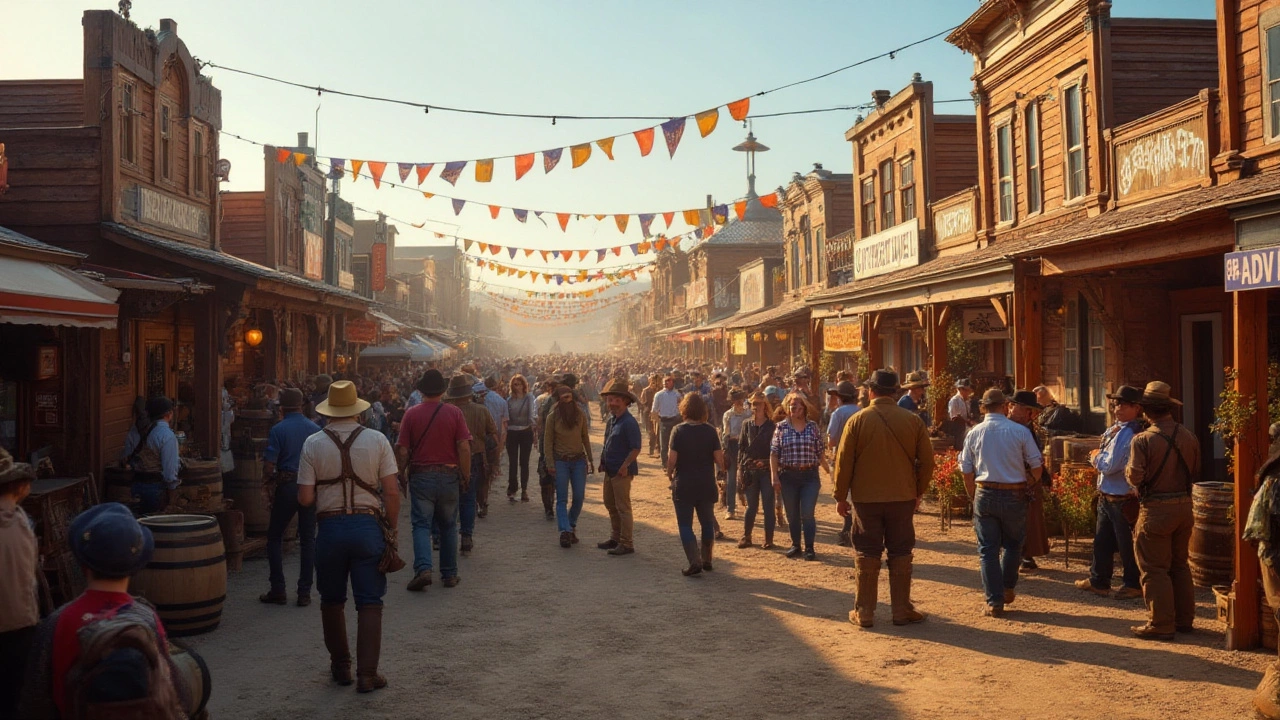
German Influence on Cowboy Brews
The arrival of German immigrants in America during the 19th century marked a pivotal shift in the evolution of beer, impacting the very heart of what we now know as cowboy culture. These newcomers carried with them not just their dreams but also an age-old tradition of brewing that was deeply rooted in their homeland. They were instrumental in introducing lager beer to the American palate, a refreshing change from the ales and whiskey that had dominated the scene. German lagers, being light and crisp, quickly gained popularity for their suitability to the American climate and palate, especially in the rugged terrains where cowboys roamed.
Before the Germans introduced lager, beer brewing had primarily been a British tradition in America, focusing on heavy ales with robust flavors. The transformation brought about by lagers was timely and significant. Cowboys, more accustomed to the rugged, back-breaking lifestyle, found solace in these lagers after long days in parched environments. The lagers were not only easier to drink in the summer heat but were also more stable over long storage periods. In fact, one could say that they paired perfectly with the smoky campfire nights and tales of the wild frontier. This ease of brewing and storing lagers on the trail allowed cowboys to enjoy a cold brew even in the middle of nowhere, making it a staple in their diet.
The influence wasn’t only practical but also social. German beer gardens began cropping up in many frontier towns, providing a community space where cowboys and townsfolk could mingle over a shared appreciation of the sudsy concoction. This era even saw the rise of renowned breweries, as the immigrant brewers set up establishments that we now consider heritage brands. Noteworthy names like Anheuser-Busch and Miller started their journey during this period, riding the wave of opportunity that the German brewing techniques presented. The bond between cowboys and German brews was cemented by this shared camaraderie that transcended cultural boundaries.
| Year | Significant Event |
|---|---|
| 1840s | First wave of German immigrants bring lager brewing techniques to America |
| 1854 | Establishment of first large-scale brewery by a German immigrant in Milwaukee |
| 1870s | Lager becomes the dominant beer type throughout the expanding American West |
The German technique of lagering meant fermenting beer at lower temperatures, something more suited to large-scale production which quickly caught on in America. It demanded innovation, such as icehouses and cellars, which were necessary to maintain low temperatures. But these challenges were overshadowed by the advantages. Lager beer was not only less labor-intensive but also more consistent in quality, an asset that was crucial as it made its way into saloons and towns where cowboys rested. The successful blending of these German traditions with the American frontier lifestyle represents a remarkable chapter in the story of the Wild West, one that modern beer festivals cherish as they strive to encapsulate this rich heritage.
"Beer, if drunk in moderation, softens the temper, cheers the spirit, and promotes health." — Thomas Jefferson, a recognition of beer's deep-rooted connection with American society.
This rich tapestry of influence serves as a testament to the vital role immigrants played in shaping the cultural tips and brewing landscape of the United States. The German Immigrants did more than just provide the templates for successful brewing; they wove together communities through shared celebrations and a newfound appreciation for lager. The tale of cowboy beer, then, is incomplete without acknowledging the pivotal German presence that forever changed the course of American beer brewing and continues to influence through festivals celebrating its storied past today.
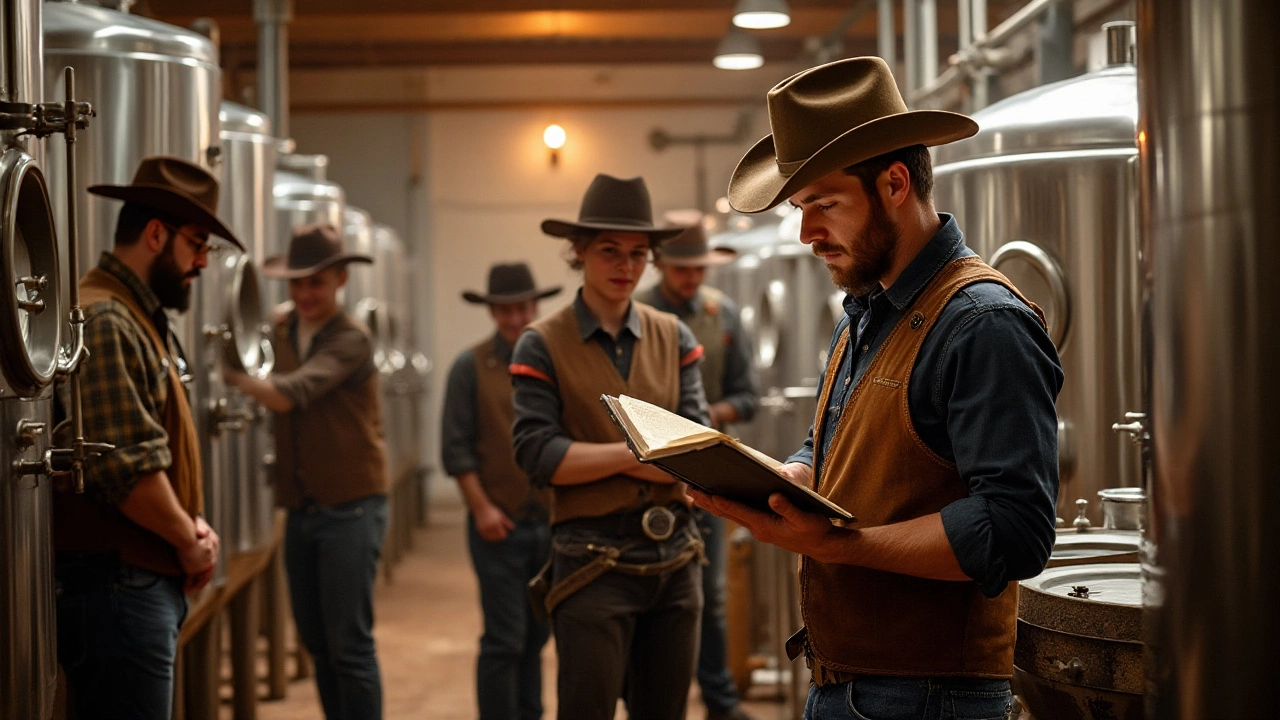
Brewing on the American Frontier
The American frontier was a place of constant transformation and endless opportunity. Among the pioneers who ventured into this untamed land, many were brewers determined to establish their own craft. In these burgeoning frontier towns, brewing evolved not only out of necessity but also because of a deep-seated cultural tradition brought by immigrants. Settling in towns where civilization seemed distant, they planted the seeds of what would become iconic in cowboy lore: the cowboy beer.
These early brewing pioneers faced countless challenges. Water sources were not always reliable, and the raw materials needed for brewing, like hops and malt, were not readily available. Ingenuity prevailed as they adapted to their environments, sometimes experimenting with substitute ingredients like corn or locally-sourced herbs. This led to the creation of novel beer styles unique to the region, embodying the spirit of resilience and innovation. Despite substantial hurdles, small breweries began to surface across the frontier, often just a stone's throw from saloons and trading posts eager to serve thirsty travelers and hardworking ranchers.
"Brewing on the frontier was about adaptation," notes historian Dr. Samuel Evans. "It was a creative process driven by necessity. Many settlers, especially those from Europe, held onto their brewing traditions and adjusted to whatever the wild American landscape offered."
The brewing process itself was an arduous task without the modern conveniences available today. Brewers often constructed their equipment from local materials; wooden kegs and improvised ‘mash tuns’ were staples of these frontier breweries. They were among the earliest innovators to use open-air fermentation, influenced by Belgian techniques. This method not only added unique flavors but also contributed to the distinctive character of Wild West drinks. Recipes were rarely standardized, leading to a variety of flavors even within neighboring towns.
Community and Brewing
The role of beer on the frontier was not merely about consumption—it served as a powerful community binder. Breweries quickly became social hubs, where locals shared news, brokered deals, and forged friendships over a hearty pint. They were places where people could temporarily escape the harshness of frontier life. Some thriving brewing towns even hosted their own local beer festivals, informal gatherings that nonetheless celebrated the shared efforts of the community. These gatherings were precursors to today's events honoring historical beer festivals.
As these frontier brewers honed their craft, their influence spread. Brewers from different cultural backgrounds exchanged techniques, further enriching the landscape of American brewing. This melting pot of methods and flavors set the stage for modern American beer, shaped by those daring enough to brew their own path in the untamed West. In small ways, these frontier pioneers crafted a legacy that lives on in the pubs and festivals of today, a testament to their enduring contribution to America’s cultural tapestry.
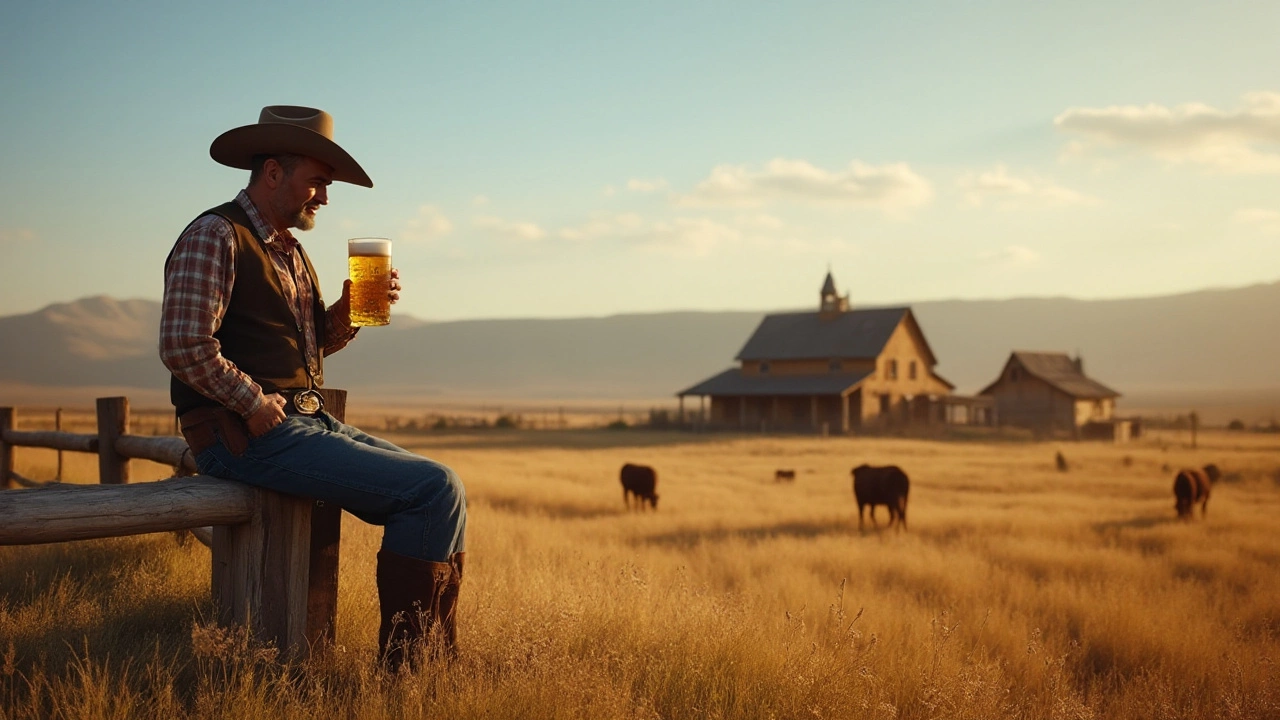
Cowboy Beer in Modern Festivals
In today's world, beer festivals have become a fascinating intersection of history and modern brewing innovation. Among these celebrations, a growing number of events have begun to pay homage to the iconic cowboy beer traditions, offering a unique experience that transports attendees back to the Wild West. These festivals capture the essence of what it meant to be a cowboy, showcasing beers brewed in the style of the late 1800s, often using traditional methods that mirror the practices of the time.
A prime example of this is the Wild West Brew Fest in Texas, a festival celebrated not only for its extensive variety of beers but also its devotion to historical authenticity. Here, brewers recreate batches reminiscent of those consumed by cowboys, providing a taste of nostalgia and robustness in every glass. Tasters will often find the familiar lagers and ales richly layered with flavors popular during that era, often featuring locally sourced ingredients, much as they would have been on the frontier.
These festivals, beyond serving liquid history, often incorporate living history reenactments, folk music, and storytelling sessions dedicated to cowboy life. Attendees are treated to a comprehensive cultural experience, understanding not only what cowboys drank but how they lived. In 2023, more than 50,000 visitors attended such historic beer festivals, proving their appeal with a detailed glimpse into America's brewing past, as noted by the Beer Institute's latest survey.
A leading figure in the craft beer movement, Ethan Goldfarb, has been quoted saying, "Bringing back these historic beers connects us with an era that shaped America's personality. It's more than just taste; it's about experiencing a whole culture." This sentiment reflects the ethos of modern festivals that are less about mere consumption and more about relishing the historic narrative brewed into each batch.
To round out the experience, festival-goers often enjoy a variety of entertainment that complements the robust flavors of cowboy beers. Alongside the troubadours and storytellers, local artisans demonstrate traditional crafts, forging a palpable connection to the past. This interactive approach enriches the festival experience, merging the taste of the beer with the spirit of the era to create an event that is as educational as it is enjoyable.
The ingenuity of these festivals lies in their deft blending of history with the innovative trends of the craft beer scene. The exploration of retro recipes offers brewers a playground for creativity while satisfying a palate eager for unique historical flavors. As the popularity of these events rises, so too does the appreciation for the rich tapestry of brewing culture that stretches back to the days of cowboys and cattle trails, keeping the spirit of the Wild West alive and well-cherished in every enthusiastic sip.

